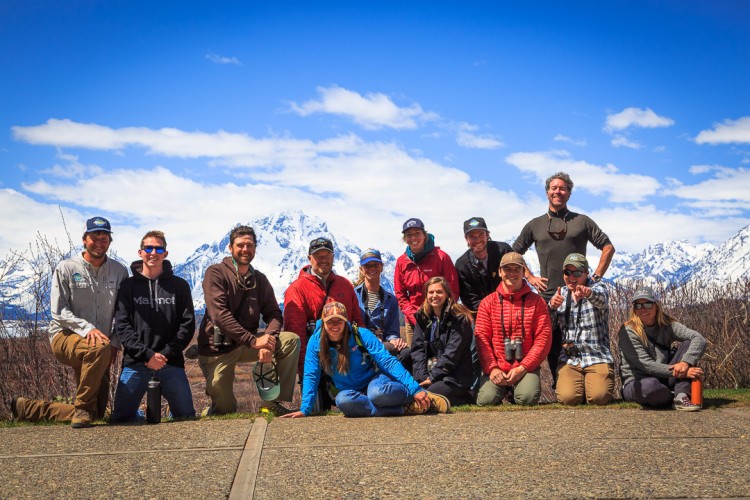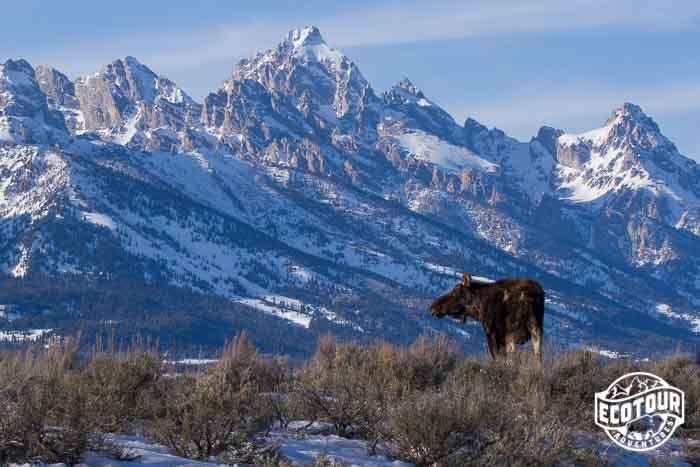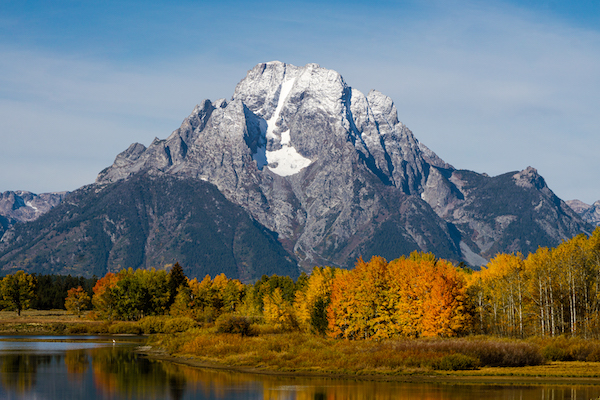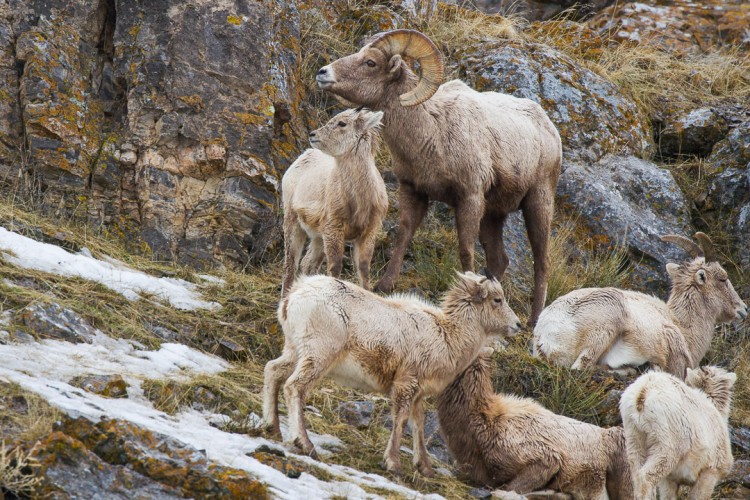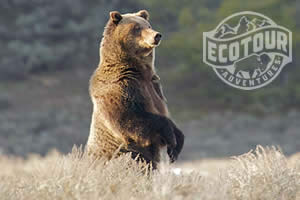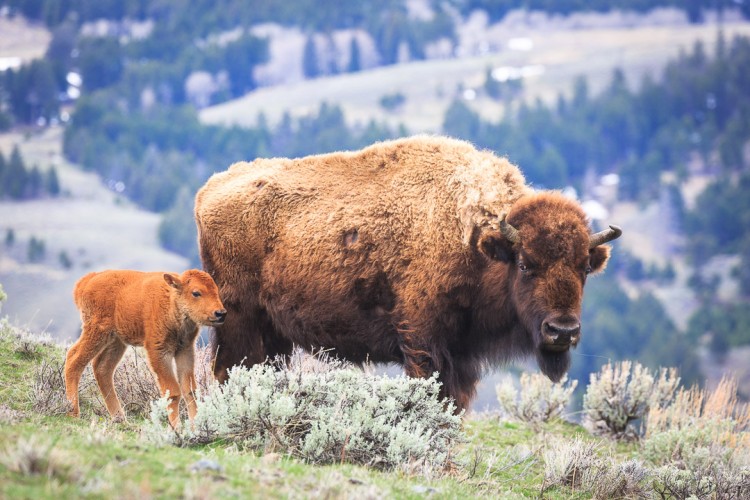
The passing of spring and coming arrival of summer is upon us across the Greater Yellowstone Ecosystem. Grizzly bears are active with cubs in both national parks, the first elk and moose calves have been spotted and a colorful explosion of wildflowers has painted the hillsides with golden yellow. Yellowstone’s major roads are now open and the experienced guides of Jackson Hole Ecotour Adventures are out exploring the parks every day.
Earlier in May we gathered for a five day staff retreat and training, preparing to share this beautiful landscape with over 5000 visitors annually. The guides of Jackson Hole EcoTour Adventures are your sustainable connection to the wilderness of the Greater Yellowstone Ecosystem, enjoy this trip report from our summer 2018 training!
Your connection to 2.5 million acres of American Serengeti
For over a century, visitors have come to Yellowstone to experience its spectacular thermal features, landscapes, and wildlife. With the recovery of iconic species such as grizzly bears, wolves and bison, the ecosystem today has a higher diversity, and abundance, of wildlife than anytime in the last 150 years. And that’s what most visitors to Yellowstone and Grand Teton National Parks are here to see, our wildlife.
With our home base in Jackson, WY, training for Ecotour Adventures guides always starts in Grand Teton National Park. Founded in 1929 to protect the rugged mountain peaks, the park was expanded in 1950 to incorporate critical wildlife habitat in the valley floor. Without that expansion, the areas we explore today on sunrise, sunset, and full day tours of the park may have been lost forever. As we explored the park we visited sites from the parks history sharing stories of early homesteaders, wildlife behavior, and the struggle to protect this landscape for the future.
One of our favorite “off the beaten path” spots to explore with guests are beaver ponds along the Snake River. Guides Kirk Ryder and Chelse Grohman explained that like many other mammal species, beaver were nearly wiped out by the late 1800’s by the fur trade, and are only beginning to recover from a loss of nearly 400 million animals!
These “ecosystem engineers” dramatically change the landscape by building dams which catch snowmelt and store it for slow release throughout the dry summer. Their ponds become nurseries for young cutthroat trout, provide moisture for lush plant growth, and habitat for other wildlife including moose, songbirds, and elk.

Searching for Grizzlies in Northern Grand Teton
Our second day of Grand Teton training focuses on the Northern part of the park, which contains some of its best grizzly habitat. Sure enough we found a grizzly and yearling cubs along the road near Jackson Lake. The recovery of Grizzly bears from the threatened species list is a popular topic of conversation on tours and we are fortunate to have a former Interagency Grizzly Bear Study Team technician, Verlin Carlton Stephens on the team.
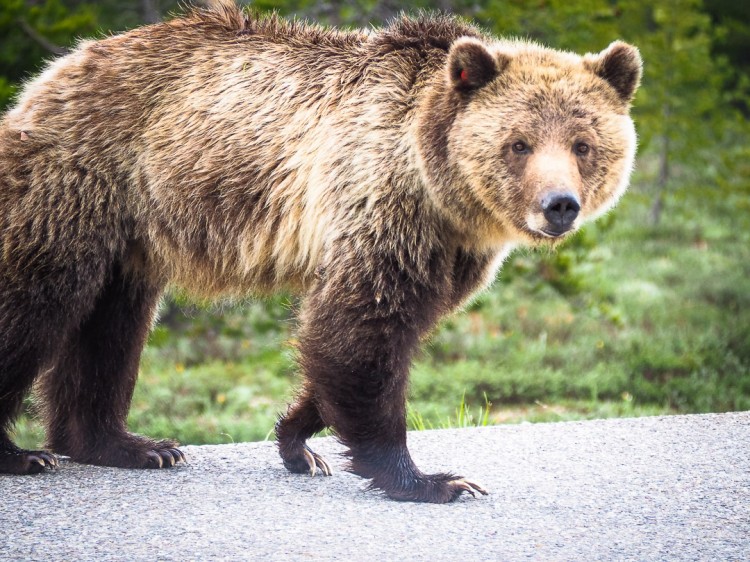
Exploring the Geologic Past of Jackson Hole
Though bear sightings are never a certainty, the Teton landscape provides abundant opportunities for other wildlife, naturali history and geology exploration. As one of the youngest mountain ranges in North America, the Tetons are rugged and steep, a result of the still active fault line which runs the length of the 40 mile range. Every time an earthquake occurs the mountains rise up a bit higher, and the valley sinks a bit lower.
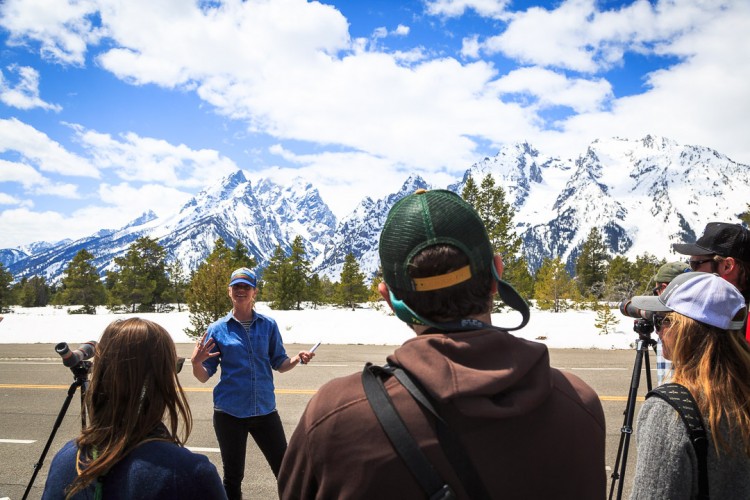
Yellowstone Multi Day - Exploring the park interior and lower loop
At around 7 times the size of Grand Teton National Park, we certainly recommend taking a few days(multiday link) to explore Yellowstone National Park but if you are short on time a day trip(link) can provide a great introduction to some of the hot spots (pun intended - the interior of the park sits on one of the world’s largest hot spots. We elected to spend two nights at the Madison Campground, spending three full days exploring the park.
Our Yellowstone day tours focus on the lower loop, which is concentrated with thermal features including Old Faithful Geyser, Grand Prismatic Spring, and Fountain Paint Pots. We also visit the Grand Canyon of the Yellowstone, checking osprey nests downstream of the 308 foot lower falls, and scan for wildlife in the Hayden Valley.
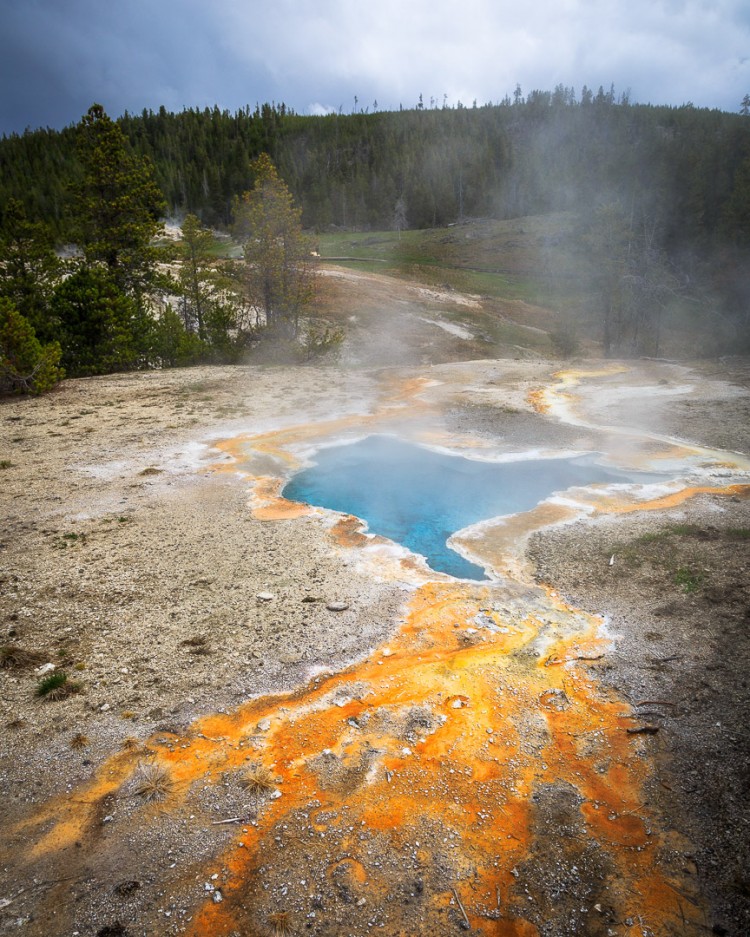
Steamboat Geyser Erupts, Baby Bison, the Return of Wolves to Yellowstone
For many EcoTour Guides, a great bear, wolf, or rare bird sighting makes for a memorable highlight, but on this trip catching the end of a Steamboat Geyser eruption was the highlight for many. The parks largest geyser erupts infrequently but reaches heights of over 300 feet, three times that of Old Faithful. Steamboat has erupted 4 times since March, before that the last eruption was in 2014!
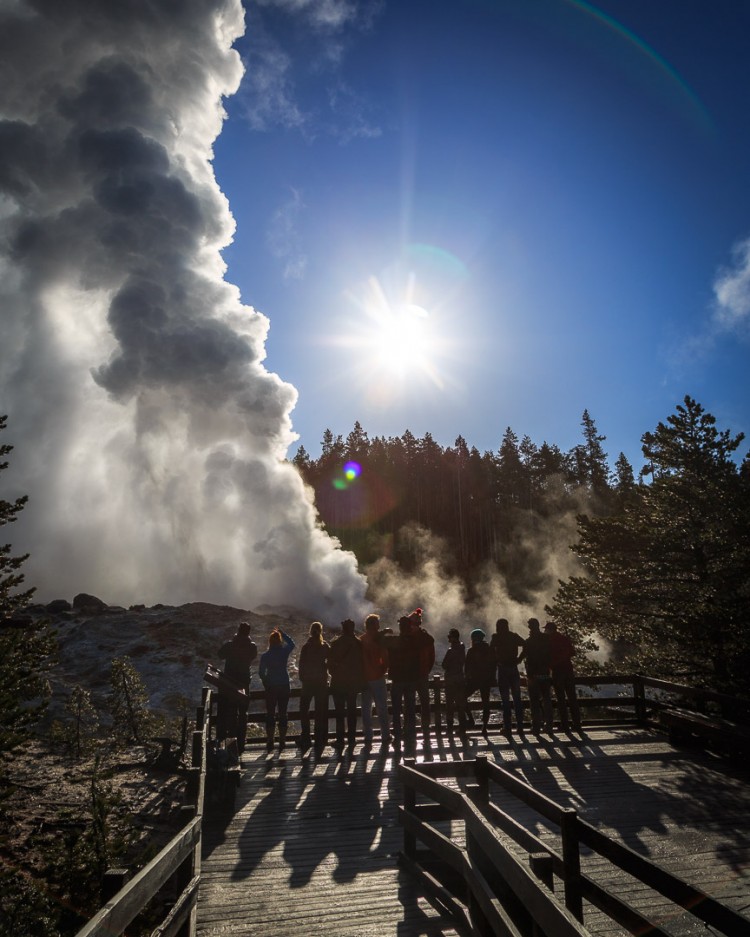
Multi Day tours of Yellowstone are not complete without wildlife watching in the Northern Range, also known as the American Serengeti. Bison calves, probably less than a week old, greeted us along the road, the first of Yellowstone’s baby animals to emerge.
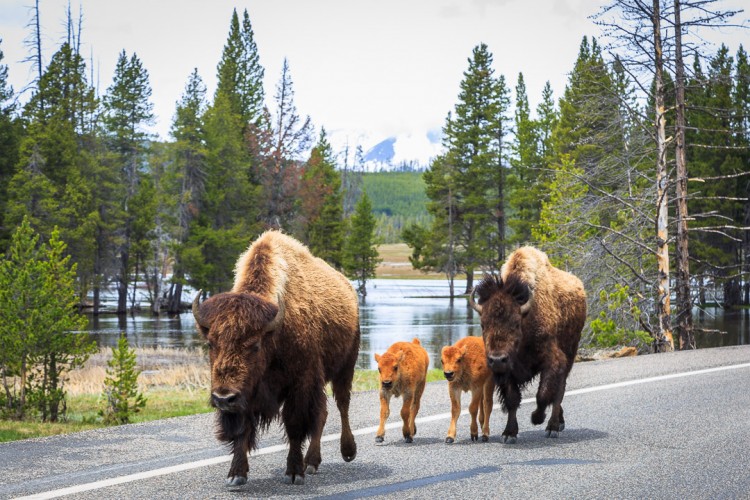
You never know where wildlife might be spotted in Yellowstone and sure enough we were able to spot wolves through spotting scopes at a stop along the road. As we watched the pack move in the distance, guide Shaun Martin noticed fresh tracks in the parking lot behind us. Guide Chelse Grohman, a current technician with the Teton Cougar Project and experienced tracker, led the group in studying the tracks. The wolf was running, likely pursuing the elk tracks we also found. There is a story behind every track.
Sharing the Story of the Greater Yellowstone Ecosystem
We completed our Yellowstone Training with a fireside talk by Yellowstone Wolf Project biologist Kira Cassidy. Kira has been studying pack dynamics in Yellowstone for a decade and spent the evening sharing stories with the EcoTour Adventures Team. Her research has found that, similar to other social animals like Orcas and Gorillas, the elders of a wolf pack have a major influence on the pack’s survival. It is the experience of these wolves which allow them to help keep the pack safe, find food, and thrive in a difficult world.

Yellowstone and Grand Teton National Parks contain a lifetime of stories, which is why year after year we are inspired to share them with our guests. Whether observing the diverse wildlife of the parks, exploring Teton Geology, or touring Yellowstone’s thermal features, there is something for everyone and we’d be thrilled to show you our favorite spots in the park.
Let the experienced guides of Jackson Hole EcoTour Adventures connect you to the wilderness of the Greater Yellowstone Ecosystem today! www.jhecotouradventures.com info@jhecotouradventures.com 307-690-9533
